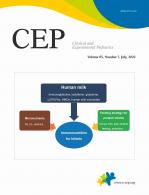The world is facing one of its gravest crises, the coronavirus disease 2019 (COVID-19) pandemic, since the first unknown pneumonia case was detected in Wuhan, China, in December 2019 [1]. According to the international Coronavirus Study Group, the novel coronavirus is caused by the severe acute respiratory syndrome coronavirus 2 (SARS-CoV-2), while the World Health Organization (WHO) coined the term “coronavirus disease 2019.” We did not expect COVID-19 to affect our lives for this long, but it continues to dominate and change our life patterns, even after 2 years. SARS-CoV-2 is highly contagious and can spread in various ways, such as respiratory droplets, when patients cough, sneeze, talk, contact contaminated objects, and airborne contagion [2]. Because of the rapid global growth of SARS-CoV-2, COVID-19 control must be achieved between and within countries. Individuals were asked to practice hand hygiene, wear a mask, maintain social distancing, and limit the number of people gathered. Extensive efforts have been made to reduce the spread of COVID-19 by requiring workers to work at home, temporarily closing companies and even schools, reducing factory operations, and closing borders. These policies were based on previous reports that showed that social distancing reduced the spread of seasonal influenza in workplaces [3]. These strategies not only reduced or eliminated the spread of COVID-19 [4], they reduced the transmission of common respiratory viruses in children [5-7]. Emergency room visits and hospitalizations among children decreased [5] with a concomitant reduction in influenza, enterovirus, and all-cause pneumonia [6]. The current abrupt and widespread COVID-19 pandemic has demonstrated the usefulness of strategies to mitigate the risk of respiratory infectious diseases in children [7].
Through the COVID-19 pandemic, we have learned how serious the emergence of a new virus is to humanity and how quickly it becomes a global problem that is not limited to one region or country. Therefore, it is necessary to continue seeking ways to understand its transmission route to reduce the subsequent restrictions imposed on our daily lives.
Another secondary positive effect of the lockdown measures to control the spread of COVID-19, a worldwide disaster, is reduced air pollution levels. Before the COVID-19 outbreak, the world was making tremendous efforts to reduce particulate matter (PM), including the implementation of air quality guidelines led by the WHO, to save the global environment. However, because of the social distancing and national lockdown in response to the COVID-19 pandemic, air pollution, represented by an ambient PM less than 10 µm in diameter (PM10), PM less than 2.5 µm in diameter (PM2.5), nitrogen dioxide (NO2), and carbon monoxide, which are particularly related to decreased industrial activities and traffic worldwide, including in Korea [7-9].
COVID-19 has had a long-lasting impact on the environmental health field. In addition to the human-to-human transmission dynamics of this respiratory virus, the role of environmental factors that may accelerate its spread and health effects have been studied. PM2.5, PM10, and NO2 can act as carriers of the infection and as a worsening factor of the health impact of the respiratory virus [9]. Therefore, the health benefits will be significant if air pollution due to domestic emissions and transported pollutants from neighboring countries can be reduced, public behavior can be changed, and filtering PM while wearing effective masks to decrease personal exposure can be enforced [10]. During the COVID-19 pandemic, the extent to which Korean children were exposed to common respiratory virus infections and air pollution was reduced [7].
It has long been known that reducing outdoor and indoor air pollution can significantly affect health. The world’s current situation of limited activities has reduced air pollution levels; however, as it is impossible to continuously limit our activities, we must identify ways to reduce air pollution and viral infections in the future.
The COVID-19 pandemic is a great disaster with a huge and varied impact on all humans. We all attempted to reduce the spread of COVID-19 through personal hygiene practices and lockdown measures. In this process, positive secondary benefits such as reducing the transmission of respiratory viral infections and exposure to air pollution were obtained. Future health policies will be required accordingly.





 PDF Links
PDF Links PubReader
PubReader ePub Link
ePub Link PubMed
PubMed Download Citation
Download Citation


